The Streak Goes On…
I continue to feel pretty good, I fly to Japan next Monday. Denise Ippolito and Paul McKenzie will be leading the Winter in Japan IPT with me.
This post marks 73 straight days with a new educational blog post, a record by far that should be extended for at least another day or so, or not. Or more…. I am not sure how good the internet access (if any) will be in Japan. To show your appreciation for my efforts here, we ask that use our B&H and Amazon affiliate links for all of your B&H and Amazon purchases. Please check the availability of all photographic accessories in the BIRDS AS ART Online Store. We sell only what I use and depend on. We will not sell you junk. We know what you need to make creating great images easy and fun. And we are always glad to answer your gear questions via e-mail.
You can find the following items in the store: Gitzo tripods, Mongoose M3.6 and Wimberley heads, plates, low feet, and accessories, flash brackets, , Delkin e-film Pro Compact Flash Cards, LensCoat products, and our unique line-up of educational materials including ABP I & II, Digital Basics, Site and Set-up e-Guides, Canon and Nikon Camera Users and AF e-Guides, and MP-4 Photoshop video tutorials among others.
We would of course appreciate you using our B&H and Amazon affiliate links for all of your B&H and Amazon major gear, video, electronic, household, and personal purchases. For the photographic stuff mentioned in the paragraph above we would of course greatly appreciate your business. Here is a huge thank you to the many who have been using our links on a regular basis and visiting the BAA Onliine store as well.
Thanks and enjoy today’s blog post! Even with no text, this blog post took well more than three hours to prepare.
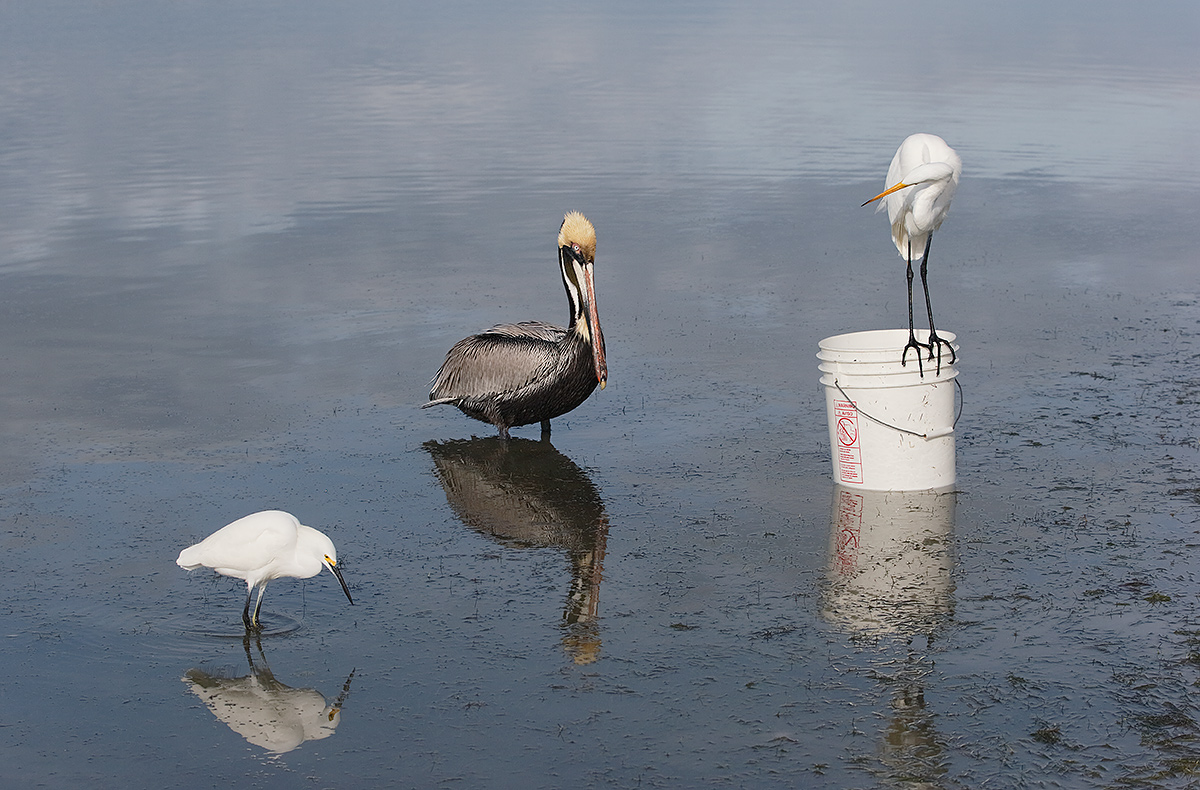
|
|
This scene was photographed on the Little Estero Lagoon IPT with the Canon EF 70-200mm f/2.8L IS II USM lens, the Canon Extender EF 1.4X III (hand held at 98mm), and the Canon EOS-1D X. ISO 400. Evaluative metering -1/3 stop: 1/2500 sec. at f/8 in Manual mode was about 1/2 stop underexposed. Color temperature: AWB. Central Sensor/AI Servo/Surround Rear Focus AF on the head of the closest bird, the Snowy Egret, and re-compose. Click here to see the latest version of the Rear Focus Tutorial. Click on the image to see a larger version. |
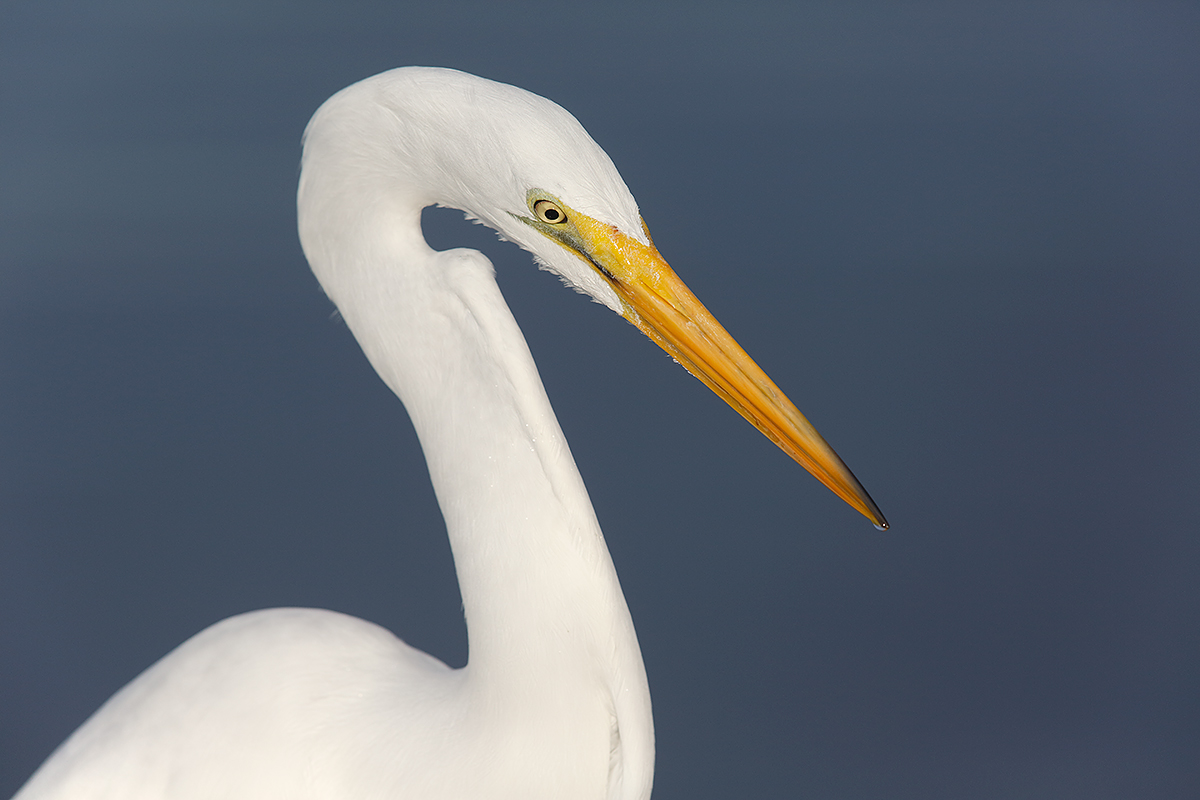
|
|
This Great Egret image was also created on the Little Estero Lagoon IPT while sitting behind my lowered Gitzo 3532 LS carbon fiber tripod with the Mongoose M3.6 head, the Canon EF 600mm f/4L IS II USM lens, the Canon 1.4x EF Extender III (Teleconverter), and the Canon EOS-1D X. ISO 400. Evaluative metering at zero at 8:15am: 1/2500 sec. at f/7.1 in Manual mode, again the standard ISO 400 bright white in full sun exposure (and the equivalent of 1/2000 sec. at f/8.). Color temperature: AWB. Two sensors above the central sensor/AI Servo/Surround Rear Focus AF just caught the white feathers near the base of the lower mandible active at the moment of exposure. Click here to see the latest version of the Rear Focus Tutorial. Click on the image to see a larger version. |
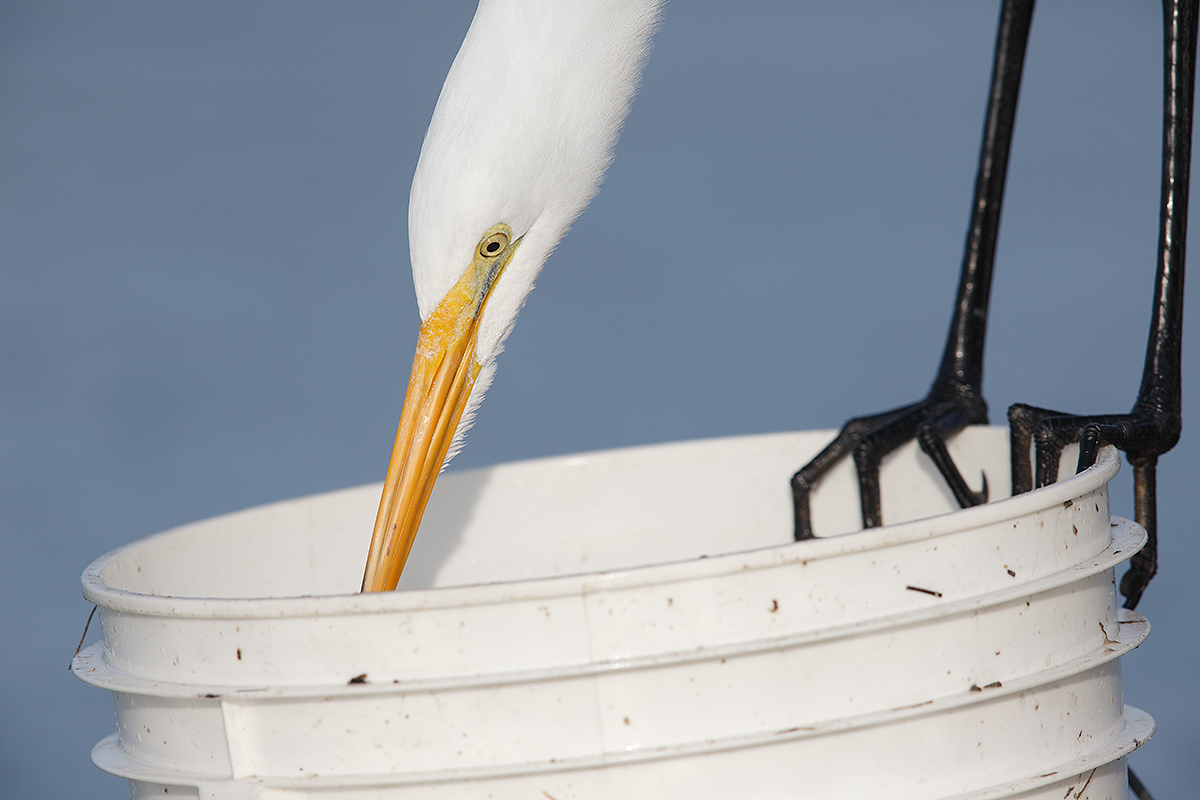
|
|
This image of a Great Egret standing on the bait bucket was created on the Little Estero Lagoon IPT while sitting behind my lowered Gitzo 3532 LS carbon fiber tripod with the Mongoose M3.6 head, the Canon EF 600mm f/4L IS II USM lens, the Canon 1.4x EF Extender III (Teleconverter), and the Canon EOS-1D X. ISO 400. Evaluative metering at zero at 8:36am: 1/2000 sec. at f/8 in Manual mode, the standard ISO 400 bright white in full sun exposure. Color temperature: AWB. Central sensor/AI Servo/Surround Rear Focus AF on the eye of the egret and re-compose. Click here to see the latest version of the Rear Focus Tutorial. Click on the image to see a larger version. |
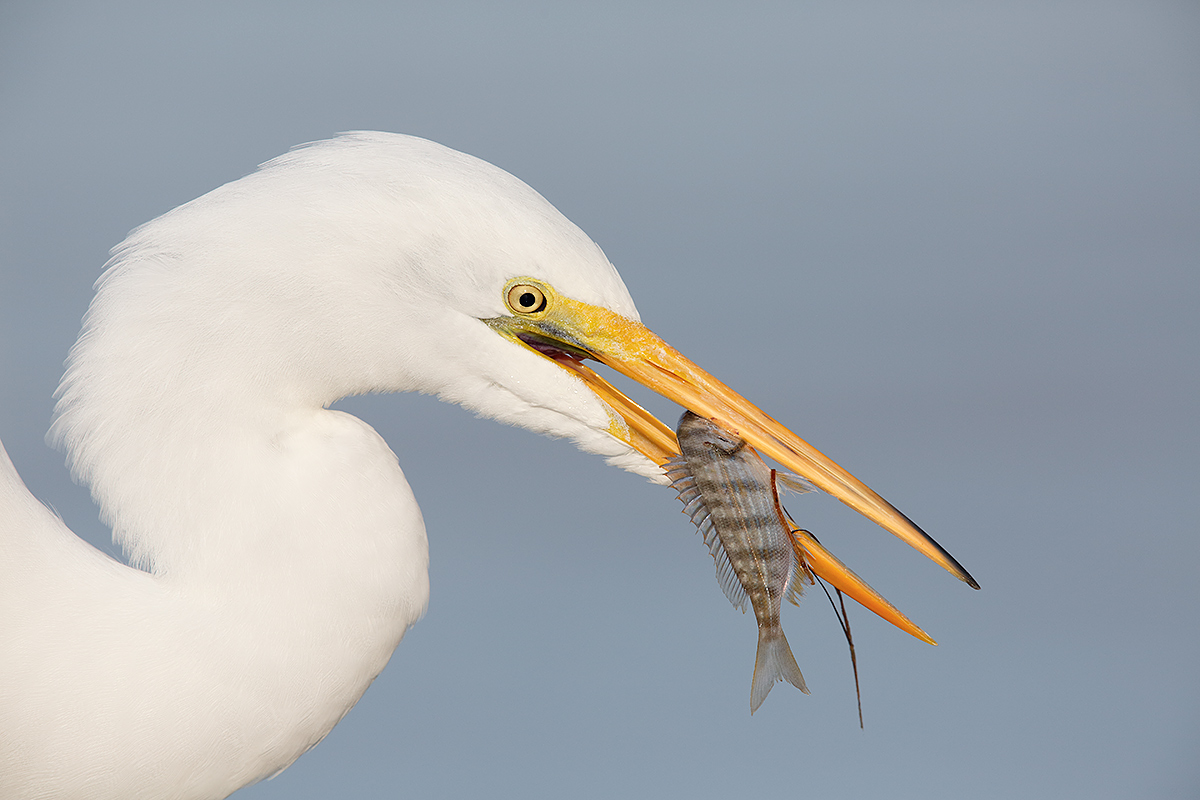
|
|
This image of a Great Egret eating a live pinfish was also created on the Little Estero Lagoon IPT while sitting behind my lowered Gitzo 3532 LS carbon fiber tripod with the Mongoose M3.6 head, the Canon EF 600mm f/4L IS II USM lens, the Canon 1.4x EF Extender III (Teleconverter), and the Canon EOS-1D X. ISO 400. Evaluative metering at zero at 8:30am when a light cloud veiled the sun for a moment: 1/1600 sec. at f/8 in Manual mode. Color temperature: AWB. 61-Point/AI Servo/Surround Rear Focus AF performed superbly here with 5 sensors just below the bird’s eye active at the moment of exposure. Click here to see the latest version of the Rear Focus Tutorial. Click on the image to see a larger version. |
|
This tight face portrait of a Brown Pelican was also created on the Little Estero Lagoon IPT while sitting behind my lowered Gitzo 3532 LS carbon fiber tripod with the Mongoose M3.6 head. This one with the Canon EF 600mm f/4L IS II USM lens and the Canon EOS-1D X. ISO 400. Evaluative metering +1/3 stop: 1/320 sec. at f/16 in Manual mode. Color temperature: AWB. Two sensors to the left of the Central Sensor/AI Servo/Surround Rear Focus AF on the birds eye. Click here to see the latest version of the Rear Focus Tutorial. Click on the image to see a larger version. |
Your Favorite?
Please take a moment to leave a comment and let us know which of the five images here is your favorite, and as always, be sure to let us know why.
I will be quick to answer any question on the images or the bait bucket and to respond to all comments, at least for the next two days.
EOS-1D X Autofocus Guide
Learn the ins and out of the great AF system of the 1D X. Of special interest to bird photographers will be my comments and strategies involving Cases 1-6, the custom-Case that I created and use for most of my bird photography (with detailed instructions for setting it up of course), my strategy for Select AF area selection mode (on AF4, the fourth purple menu), and pretty much anything that has to do with 1D X autofocus….Get your PDF via e-mail here for only $25.
A Creative Adventure/BIRDS AS ART Instructional Photo-Tours (IPTs)/Two great leaders: Arthur Morris & Denise Ippolito.
Arthur Morris/BIRDS AS ART www.BIRDSASART-blog.com for the latest images, info, & education
Denise Ippolito/A Creative Adventure www.deniseippolito.com: get yourself out of the box!
Denise’s e-books: Bloomin’ Ideas, A Guide to Filters & Effects, The Softer Side of Macro, & more. Free Monthly Creative MiniMag: www.deniseippolito.com/magazine
Nickerson Baby Beach-nesting Birds IPT, Long Island, NY: 3-Full Days/July 22-24, 2014: $1199.
Black Skimmers, Common Terns with chicks, American Oystercatcher & Piping Plover families; breeding behaviors including courtship feeding, display flight and combat, and copulations. Gulls and shorebirds.
UK Puffins IPT. Early July, 2014.
Details TBA. Please e-mail to be placed on the interested list.
Tanzania Serengeti Summer Safari: Leave US: August 9—return: August 24, 2014: $12,999.
Co-leaders: Arthur Morris & Todd Gustafson. Wildebeest/The Great Migration, cats, elephant, giraffe, zebra, birds & more. Please e-mail for brochure.
Swan Island Dahlia Farm IPT, Canby, OR, September 8-12, 2014: 5 FULL DAYS: $1699.
Leader: Denise Ippolito. 40 acres with 350+dazzling varieties of dahlias in a plethora of colors, shapes and sizes. Sharpen your technical skills and boost your creative juices. Daily assignments, image sharing, and Photoshop sessions.
Bosque del Apache 2014 A Creative Adventure/BIRDS AS ART “Creative Photography Instructional Photo-Tour.” (IPT). NOV 24-25, 2014. 2-FULL DAYS: $729.
Leaders: Denise Ippolito & Arthur Morris. Introductory Slide program: 7:00pm on Sunday 11/23. This IPT is perfect for folks who want to learn to think outside the box, to create new and different images. Learn to unleash your creative juices at the wondrous Bosque del Apache, NWR in San Antonio, NM.
Bosque del Apache 2014 BIRDS AS ART/A Creative Adventure Instructional Photo-Tour (IPT). NOV 29-DEC 3, 2014. Totaling 4 FULL-DAYS: $1449
. Leaders: Arthur Morris and Denise Ippolito. Introductory Slide program: 7:00pm on Sunday 11/29. Tens of thousand of Snow Geese, 10,000 Sandhill Cranes, ducks, amazing sunrises, sunsets, and blast-offs. Live, eat, and breathe photography with two of the world’s premier photographic educators at one of their very favorite photography locations on the planet.
Antarctica/The Extended Expedition Voyage: Antarctic Peninsula, South Georgia and Falkland Islands: December 13, 2014 to January 10, 2015.
Please e-mail for details.
BAA offers a wide range of books, e-Guides, and educational materials and photographic accessories at the lowest prices around—25+ years of experience, and the best advice you can get. We will not sell you junk. Access the BAA Store here or call us at 1-863-692-0906.
Questions? Please e-mail us at birdsasart@verizon.net or photographybydenise221@gmail.com.
Support the BAA Blog. Support the BAA Bulletins: Shop B&H here!
We want and need to keep providing you with the latest free information, photography and Photoshop lessons, and all manner of related information. Show your appreciation by making your purchases immediately after clicking on any of our B&H or Amazon Affiliate links in this blog post. Remember, B&H ain’t just photography!




Amazon
Everyone buys something from Amazon, be it a big lens or deodorant. Support the blog by starting your search by clicking on the logo-link below. No purchase is too small to be appreciated; they all add up. Why make it a habit? Because I make it a habit of bringing you new images and information on an almost daily basis.
Typos
In all blog posts and Bulletins, feel free to e-mail or to leave a comment regarding any typos, wrong words, misspellings, omissions, or grammatical errors. Just be right. 🙂
IPT Info
Many of our great trips are filling up. See especially info on the Holland, Nickerson Beach, and Bosque IPTs. Two great leaders on most trips ensure that you will receive individual attention, have all of your questions answered, and learn a ton including how to think like a pro, see the situation, and get the right exposure every time. In addition you will have fun, and make lots of great images. Click here for IPT details and general information.

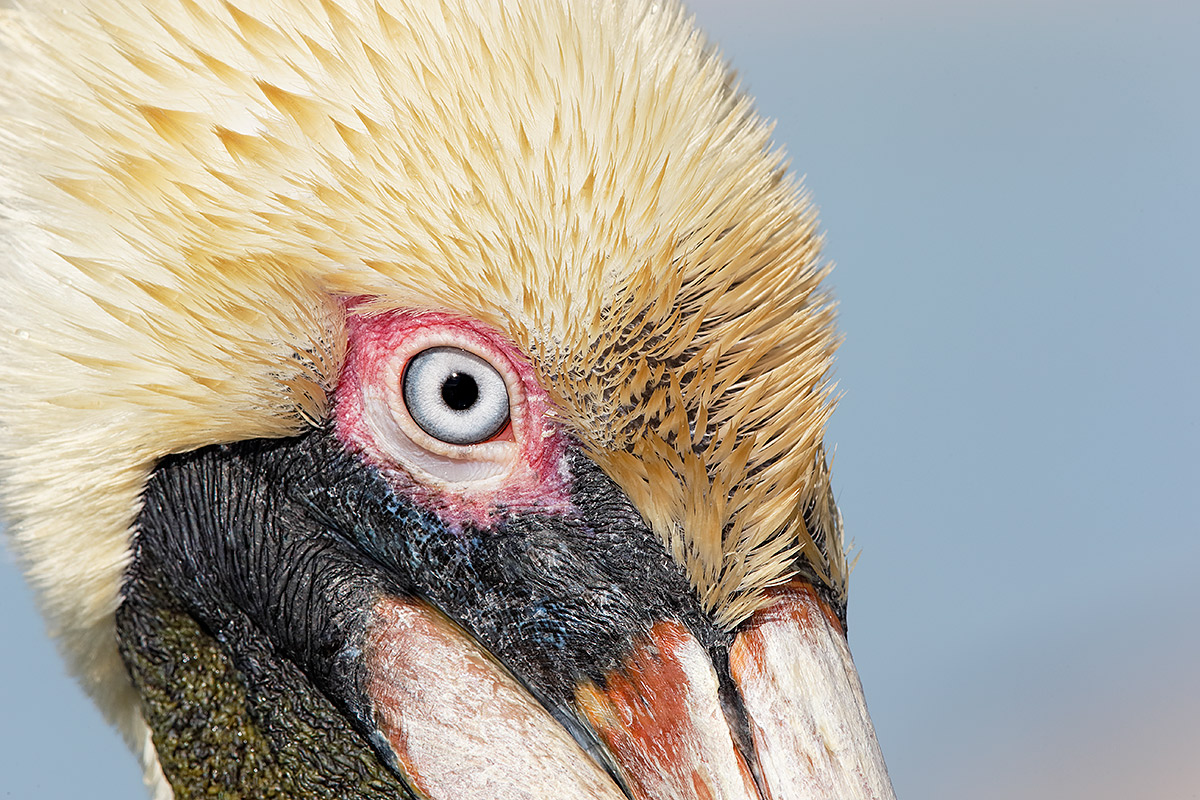
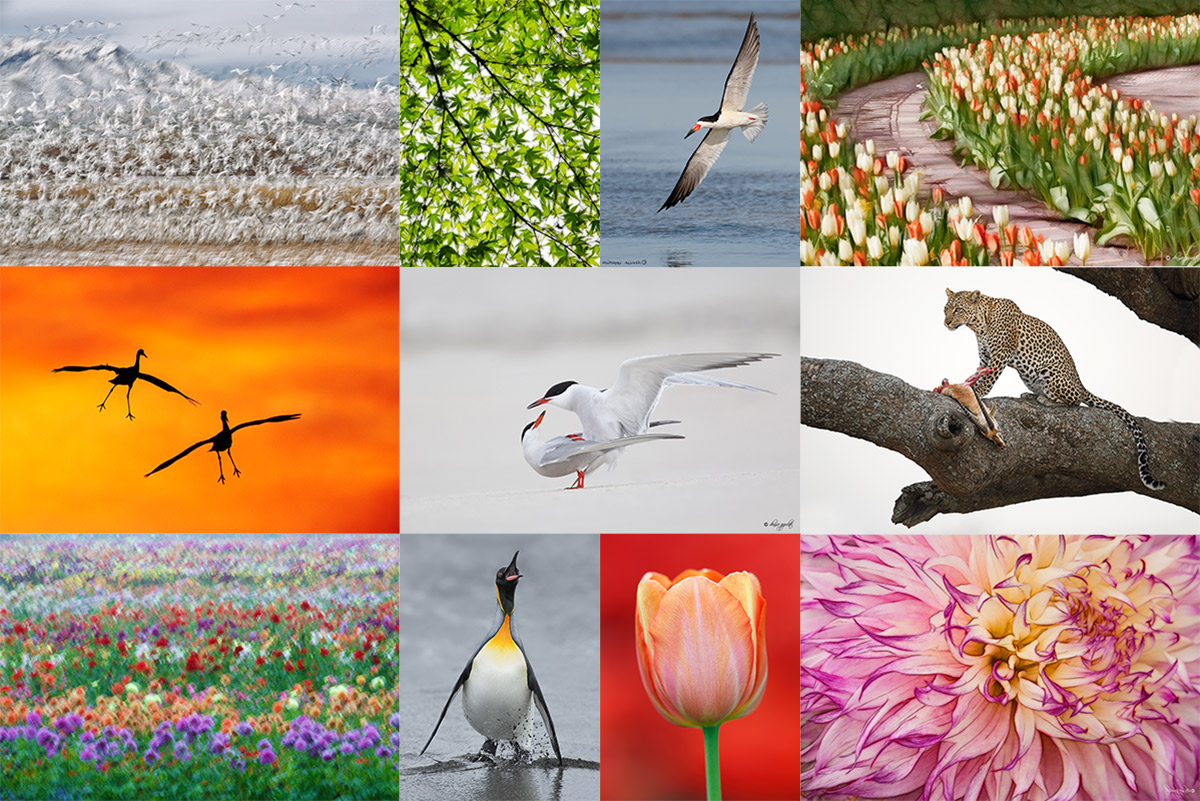















I actually like the first one. The Egret on the bucket and that head turn toward the Pelican…its almost like he’s saying ‘what are you doing on our beach?’.
Doug
Sorry, I am distracted by the story-telling going on in the first photo and you know what they say about photos and 1000 words. I think that one is my favorite, even though the others are also well composed and captured. They just don’t hold a bait-bucket to the first in my opinion.
Safe and healthy travels to Japan!
Thanks but sorry. I am quite confused by your comment. You are distracted by the story telling in the first image but then you choose it as your favorite…. As I said, quite confusing…. artie
Wonderful images, Artie, and they tell quite a story, although some details are fuzzy (How and why did the bucket get there? How did the fish get in the bucket? How many fish are in the bucket?). My favorites are the closeup of the egret’s head and feet on the bucket, and of the egret eating the pinfish. incredible detail, composition, and rendering of the whites. I see you took the snowy owl eyes off the bucket; now that would have been a puzzler. 🙂
Bon voyage.
Hi David, Thanks. Why don’t you take a crack at your own questions. I’d bet that you figure most of it out. I’ll give you this one: there were only a few fish left in the bucket. Here is one more for you? Who do you think was throwing the cast net and catching the fish? artie
Artie, I kind of enjoy the mystery. But here goes. I think you put the bucket there.
Correct.
The fish are baitfish and were taken out of the cast net and put in the bucket.
Corect again.
Now, who threw the net? We know it wasn’t Denise. I know you used to fish and I know you’re pretty agile but I would guess it wasn’t you, either.
Incorrect.
Throwing a cast net takes considerable skill and takes a lot of practice….
Correct.
and I think you spend your time otherwise, wisely.
Wrong. Once I want to learn something and put my mind to it I do it. That’s what I did when I realized that learning to throw a cast net would be a huge plus on an IPT….
That shallow water isn’t where one would use a cast net anyway, and you wouldn’t find pinfish there.
Wrong and wrong 🙂
So someone went on a boat into deeper water and threw the cast net. Two guesses as to who. 1. A fishing friend of yours, who gave you the bait. 2. A bait supplier, from whom you bought the bait.
Wrong, wrong, and wrong. And I thought that it would be easy. Thanks to all the IPT folks who visit here but did not spill the beans on my cast netting prowess. later and love, artie
Have a safe and productive trip to Japan. Looking forward to your reports.
Many thanks. artie
A big snow storm in Japan now…. Hope you can travel there without any delay.
Are you going to shoot Tancho (red-crowned cranes) in Kushiro again?
Looking forward to your amazing photos as always.
I had the storm cancelled :). Seriously, the weather report is now good. We do want snow for the cranes and the swans :). artie
My favorite is the second image, Great Egret portrait
Thanks you sir. I like the diagonals in that one.
The sharpness in the above images is incredible and also the detail in the whites.
:). I used about a 12-20% Liner Burn on the WHITEs as detailed in Digital Basics.
My favorite is the Great Egret with the fish. As far as how the bait got in the bucket… don’t tell me Denise learned how to throw the cast net.
That would be never 🙂
She got that right!
Really like the portrait of the brown pelican… The detail in the image is what got me. It’s so up close and personal! Great….
Thank you sir. But that one is not my fave :).
Oh Artie…CURSE you for making the choice so tough!!! I think it comes down to either #3 or #4 for me….I really love the close up detail of the Pelican!!! The Egret is sweet as well….arrggghhhh
Thanks. Which egret image???
My fave is the tight portrait of the pelican. Gotta love the often unseen detail of that face.
Thanks David. Denise and I look forward to see you on the Bosque IPT next season! artie
Love the images. Had the great egret grabbed the fish from the bait bucket?
Thanks John T. That would be a yes. A question for all: how did the bait get in the bucket? artie
The person with “The Cast Net” caught it and put it there? That seems too simple an answer to bother asking the question. Perhaps some bird caught the fish, flew to the bucket and dropped it into the bait bucket while flipping it and then the Great Egret came along and picked it out?
Hey Jim, Thanks for stopping by. Let’s see what others think…. artie
Great images.
Thanks Robert. Which was your fave? artie